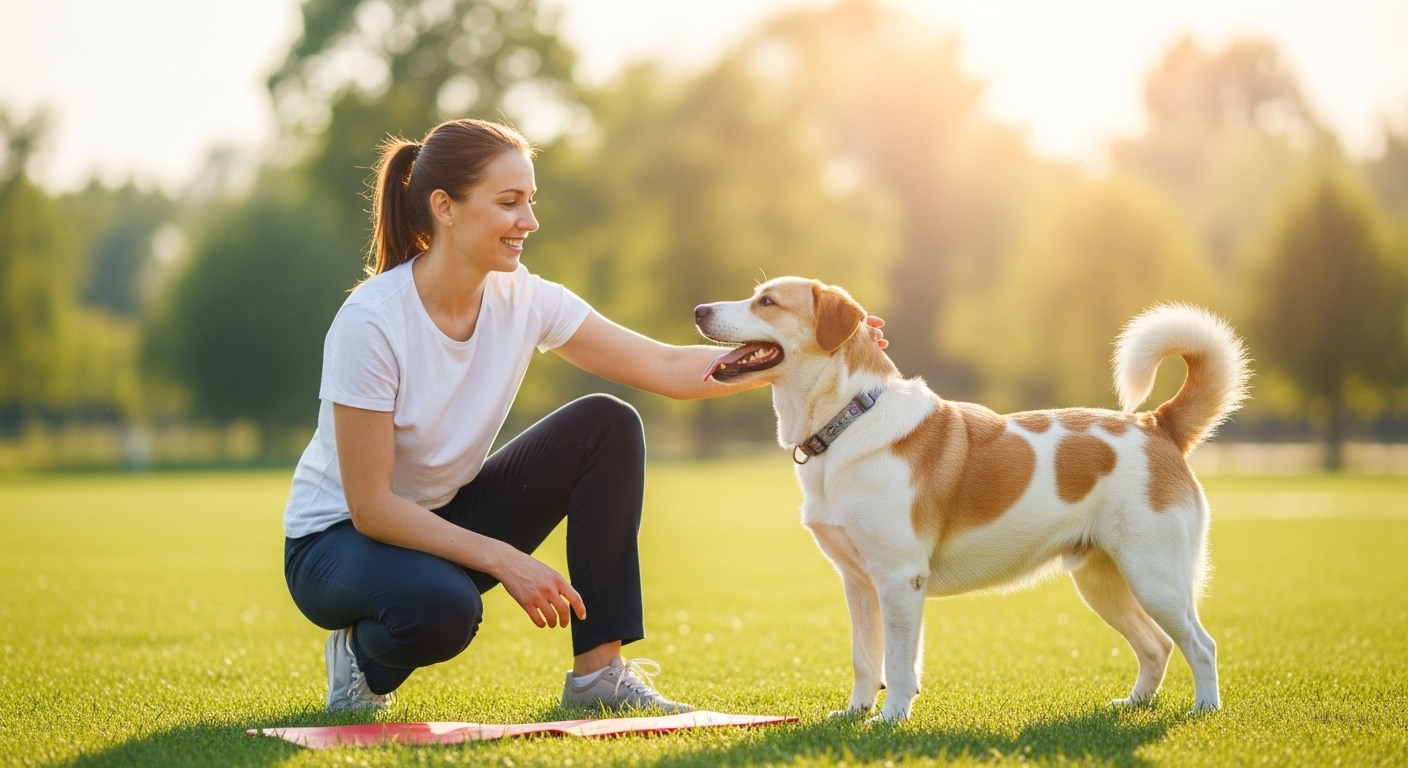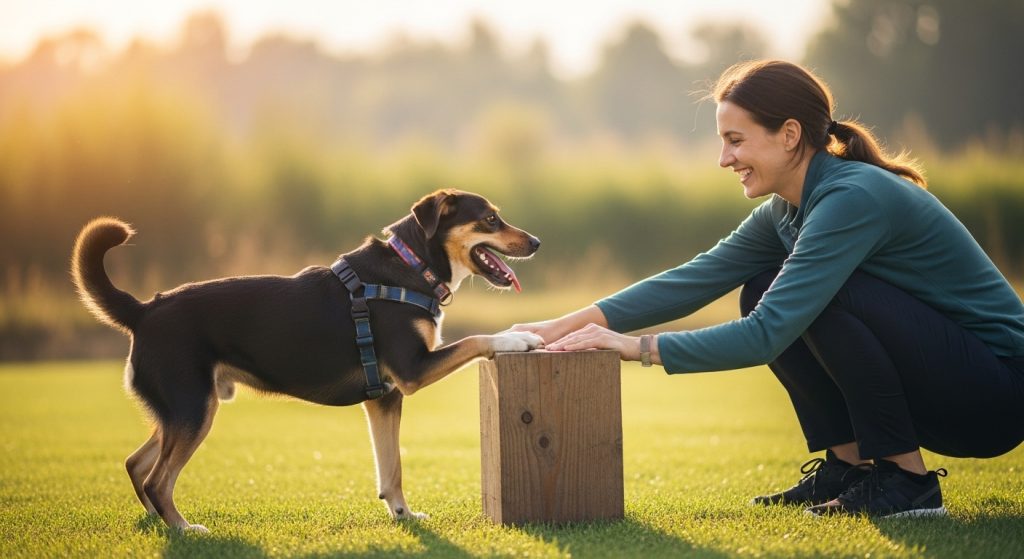Training your dog should be fun, rewarding, and full of bonding moments — but even the most loving owners make mistakes. Whether it’s inconsistent commands, poor timing, or unrealistic expectations, small errors can lead to big behavior problems.
The good news? Every mistake can be fixed.
Understanding why these training errors happen and how to correct them is the first step toward building a stronger, more trusting relationship with your dog.
In this guide, we’ll explore three major categories of dog training mistakes, their effects, and practical strategies to fix them effectively.
Miscommunication — When You and Your Dog Speak Different Languages
Mistake #1: Inconsistent Commands
Dogs thrive on clarity. If one day you say “come” and the next you say “here,” your dog won’t know which command to follow. The same goes for tone — yelling sometimes and whispering other times confuses your dog’s learning process.
Fix:
-
Choose one consistent word per command and stick with it.
-
Use a calm, confident voice every time.
-
Reinforce success immediately with praise or treats.
Example: Instead of saying “Come here, now!” one day and “Come!” the next, always use “Come” as the single cue.
Mistake #2: Poor Timing
Dogs connect rewards and corrections to what happened 2–3 seconds earlier — not what happened a minute ago. Delayed reactions make it impossible for them to understand what behavior you’re reinforcing.
Fix:
Reward or correct behavior instantly. If your dog sits, reward right as they sit, not after standing up. Timing builds strong cause-and-effect associations.
A clicker can be your best friend here — it provides precise timing for rewards.
Mistake #3: Talking Too Much
Dogs don’t understand full sentences. Constant chatter can dilute your commands and confuse them.
Fix:
Use short, clear cues: “Sit,” “Stay,” “Come.” Limit verbal noise and rely more on tone, body language, and gestures.
Consistency in both voice and motion helps your dog associate words with actions more quickly.
Key Takeaway
Your dog doesn’t misbehave out of spite — they simply misunderstand your signals. When communication becomes consistent and calm, training sessions turn into a language of trust and teamwork.
Emotional Mistakes — When Feelings Get in the Way
Mistake #4: Losing Patience
Frustration is one of the biggest roadblocks in dog training. Dogs feel your energy — if you’re angry, they’ll become anxious or fearful, which halts learning.
Fix:
Take breaks when things get tense. Training should be positive and playful. If your dog isn’t responding, reassess your timing, environment, or rewards instead of scolding.
Remember: patience builds trust; frustration breaks it.
Mistake #5: Expecting Too Much, Too Soon
Many owners expect their dogs to learn commands instantly. But just like humans, dogs need repetition and consistency. Overwhelming your dog with long sessions or too many commands leads to burnout.
Fix:
-
Keep training sessions short (5–10 minutes).
-
Focus on one command per session.
-
End on a positive note with praise or playtime.
Over time, small consistent steps will lead to big, lasting results.
Mistake #6: Using Punishment Instead of Guidance
Yelling, hitting, or using shock collars can damage trust permanently. Dogs trained through fear may obey, but they do so out of anxiety — not understanding.
Fix:
Switch to positive reinforcement training. Reward good behavior, ignore minor misbehavior, and redirect unwanted actions gently.
For example, if your dog jumps on guests, teach “sit” and reward calm greetings instead of scolding.
Mistake #7: Forgetting to Reward Calm Behavior
Most owners reward excitement — tail wags, barking, jumping. But calm behavior is what you actually want to reinforce.
Fix:
Whenever your dog lies quietly, sits patiently, or waits politely, offer a soft “good dog” and a treat. Over time, they’ll learn that calmness earns attention, not chaos.
Pro Tip: Be the Energy You Want Your Dog to Mirror
Your mood influences your dog. If you want calm obedience, practice calm leadership. Dogs reflect the emotional tone of their humans — always.
Structural Mistakes — When the Training Plan Fails
Mistake #8: Skipping Consistency and Routine
Inconsistent schedules or random commands create confusion. Dogs learn through patterns and repetition.
Fix:
Build a daily training routine — same time, same place, same expectations. Repetition cements learning and helps your dog anticipate what’s next.
You can even link commands to daily activities:
-
“Sit” before meals
-
“Wait” before opening doors
-
“Come” before walks
Mistake #9: Not Socializing Early Enough
Dogs need exposure to people, pets, and environments to develop confidence. Without it, they may grow fearful or reactive.
Fix:
Start socialization early — gradually and safely. Introduce new sounds, surfaces, and friendly dogs at your dog’s comfort pace.
Avoid overwhelming your pet. Pair every new experience with treats and encouragement.
Mistake #10: Forgetting to Practice in Real-Life Situations
Some owners train only in quiet, controlled settings. But dogs must generalize commands — “sit” means “sit” everywhere, not just in the kitchen.
Fix:
Train in varied environments: parks, sidewalks, pet stores. Add small distractions once your dog masters each skill.
Consistency in new settings transforms obedience into reliability.
Bonus Tip: Keep It Fun!
Play-based training improves learning retention. Use toys, games, and praise to make every session exciting.
Training isn’t just about obedience — it’s about building joy and teamwork between you and your best friend.
Key Reflection
Training your dog is a journey, not a one-time event. Mistakes happen, but they’re opportunities for growth — for both of you. With awareness, consistency, and love, even the most stubborn habits can be reshaped.
From Confusion to Connection
Every dog wants to please its human — but they need clear, kind guidance to understand what you expect.
By identifying and fixing these common dog training mistakes, you’re not just teaching commands; you’re building communication, respect, and lifelong companionship.
With patience, consistency, and love, your dog will transform from a confused learner to a confident, well-behaved partner who trusts you completely.




